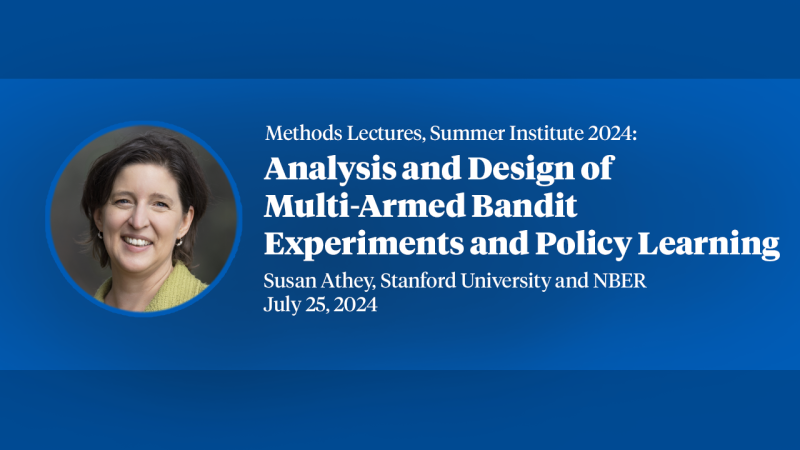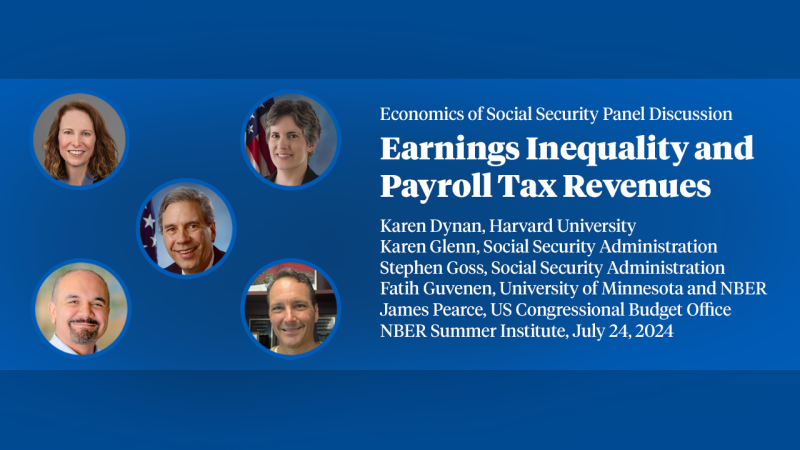Trade Agreements as Incomplete Contracts
The traditional theory of international trade typically views trade agreements as complete, or as contracts that specify all the relevant policy instruments and cover all possible contingencies. Implicit in this approach is the assumption that all relevant policy instruments and contingencies can be specified in the contract and verified by a court. In reality, though, even the most elaborate trade agreement -- the GATT/WTO -- is a vastly incomplete contract: the constraints imposed by the agreement on governments' policy choices are largely non-contingent, and many relevant policy instruments are left out of the agreement.
Another counterfactual implication of the complete-contracting view of trade agreements is that judicial bodies, such as the WTO's Dispute Settlement Body, should play only a pure enforcement role. In reality, however, most trade disputes in the WTO concern not simply the enforcement of clearly specified obligations but rather the interpretation of vague provisions, or of instances in which the text of the agreement is silent. This suggests that one important role for the WTO's court may be to "complete" an incomplete agreement.
All of this leads to important questions: How do we explain the particular structure that trade agreements take in reality? Can an incomplete-contracting perspective help us interpret the rules and institutions that have emerged in the world trading system?
Rigidity and Discretion in Trade Agreements
In one paper, Henrik Horn, Robert Staiger, and I propose a simple incomplete-contracting model of trade agreements in which the contractual incompleteness arises from the presence of contracting costs. 1 We argue that this incomplete-contracting perspective can help to explain some core features of the GATT/WTO. In particular, the agreement binds trade policy instruments, while leaving the choice of most domestic policy instruments to the discretion of governments. One exception is that the WTO has introduced some regulation of domestic subsidies. Second, the restrictions in the GATT/WTO are not usually conditioned on any information about the state of the economy, except for some "escape clauses" that allow for temporary protection under some specific circumstances. Finally, the agreement only stipulates upper bounds on the tariffs, thus leaving governments with discretion to go below the bounds.
Our key assumption is that it is costly to negotiate and draft a trade agreement, and that contracting costs are higher when the agreement is more detailed, both in terms of the policies that it seeks to constrain and the contingencies that it specifies.2 We explicitly incorporate the costs of contracting over policies and contingencies into our model, and study the optimal design of a trade agreement in the presence of these costs.3
We find first that it cannot be optimal to contract over domestic subsidies while leaving tariffs to discretion. This result accords well with the emphasis on trade measures that characterizes the GATT/WTO. And, while this feature is often informally explained as deriving from distinct levels of contracting costs across these instruments, our model imposes no such distinction and thus identifies a more fundamental explanation.
Next we find that it is optimal to leave subsidies to discretion if: 1) countries have little monopoly power in trade, in which case they have little ability to manipulate terms of trade; or 2) they trade little, in which case they gain little from exploiting their power over terms of trade; or 3) subsidies are a poor substitute for tariffs as a tool for manipulating the terms of trade. The trade volume effect identified above suggests a possible explanation for the fact that the WTO has introduced a regulation of domestic subsidies that was not present in GATT, namely that a general increase in trade volumes over time has increased the cost of discretion, thereby heightening the need to constrain domestic policies.
We then examine whether the optimal agreement will include contingencies regarding the state of the economy, and if so, what variables should be used to condition the agreement's terms. . A key observation is that, since the incentive to distort subsidies for terms-of-trade purposes increases with trade volume, making tariffs state-contingent can help to mitigate this incentive against especially high trade volumes. This effect is at the core of our third result: conditional on leaving subsidies to discretion, it can be optimal to make tariffs contingent on variables that affect the trade volume but are irrelevant to the first-best tariff level. One implication of this result is that it can be optimal to specify an escape-clause type rule that allows governments to raise tariffs when the level of import demand is high.
Finally, we show that the presence of contracting costs can explain the fact that the constraints imposed by the agreement on tariffs take the form of upper bounds, rather than exact tariff levels.
Dispute Settlement Procedures
In a subsequent paper, Staiger and I take the incomplete-contracting approach to trade agreements one step further by examining the potential role of a Dispute Settlement Body (DSB) as a mechanism for "completing" an incomplete agreement.4
Although in economic models trade disputes typically are treated as synonymous with concerns about enforcement, in reality most WTO disputes seem to concern the interpretation of vague provisions, or instances in which the agreement is silent. Some have suggested that the WTO's DSB could usefully grant exceptions to rigid contractual obligations. In this paper, we examine these potential DSB roles with the help of a formal model and address two more specific questions: How "activist" should the DSB be? That is, should it have authority to interpret vaguely-stated obligations, to fill gaps in the agreement, or to modify rigid obligations? And, should DSB rulings set precedent for future rulings?
We find that, if the DSB has sufficiently accurate information, it is optimal to build discretion into the contract and to provide the DSB with a mandate to fill the gaps. On the other hand, if the DSB's information is poor, it is optimal to write a contract that is either vague or rigid and to then bar the DSB from attempting to "complete" the contract. If the accuracy of the DSB's information falls into an intermediate range, then it is optimal to write a vague contract and to provide the DSB with a mandate to interpret the contract when disputes arise.
Interestingly, our analysis does not support the "modification" role of the DSB: it is never optimal to allow the court to void obligations that are clearly stated in the agreement. We also find that, if the DSB is sufficiently accurate, the first-best outcome can be achieved even though the contract is highly incomplete, the use of the DSB is costly, and the DSB rulings are imperfect. That is because the threat of invoking the DSB, and the expectation of a sufficiently precise DSB ruling, is sufficient to induce governments to act efficiently. Therefore, our model suggests that imperfection in the DSB information does not necessarily impair the performance of the institution; the presence of an activist DSB potentially can generate dramatic efficiency gains, in spite of its (inevitable) information limitations.
At the same time, our analysis offers a warning. We find that, if litigation costs are not too high, the equilibrium policy tends to be efficient when the DSB is not invoked in equilibrium. Moreover, we find that equilibrium disputes are more frequent when the DSB is less accurate. Thus, in effect the motives that trigger a DSB filing are inefficient, and the efficiency-enhancing effect of the DSB is associated with its off-equilibrium impacts. This is because, anticipating the possibility of error by the DSB, governments are tempted to game the system within the leeway offered by the incompleteness of the contract: the importer is tempted to protect when it should not, hoping to get away with it; and the exporter is tempted to force free trade by filing a dispute when it should not. One implication of these findings is that the intensity of DSB use is not a reliable indicator of the performance of the institution.
We next examine whether DSB rulings should set legal precedent for future rulings. On one hand, precedent reduces the probability of having disputes tomorrow, by removing uncertainty about the rights and obligations that will apply should the same situation occur again, and this leads to a beneficial savings in litigation costs. On the other hand, we find that precedent increases the probability of a dispute today, with the associated waste in litigation costs and a less efficient policy selection (because the DSB is imperfectly informed). When we examine how the resolution of these opposing effects varies with key parameters of the model, we find that the introduction of precedent is more likely to enhance the performance of the institution when the accuracy of DSB rulings is low and when governments care little about the future, or are not very likely to interact repeatedly.
Liability Rules versus Property Rules in Trade Agreements
A further potential strategy for coping with the incompleteness of trade agreements is to structure trade policy commitments as "liability" rules. A liability rule leaves a government free to raise trade barriers in response to changing circumstances, but requires the government to compensate its trading partners with a certain amount of "damages." This type of rule builds some flexibility into the agreement without the need to describe contingencies explicitly. The alternative to liability rules is given by "property rules." A property rule either endows the exporting country (or countries) with the right to free trade or endows the importing country with the right to trade protection. Such entitlements can only be transferred through a voluntary transaction (renegotiation). There is a large law-and-economics literature on the choice between liability rules and property rules in the design of domestic law, but there is little formal research on this question in the context of international trade agreements.
In another paper, Staiger and I forge a link between the theory of trade agreements and the law-and-economics theory of the optimal design of legal rules.5 We propose a simple model that highlights the role of transaction costs, renegotiation, and settlement "in the shadow of the law." We ask under what conditions liability rules are preferable to property rules and, in cases where liability rules are desirable, what the optimal level of damages is.
It is important to understand the difference between domestic law as studied in the law-and-economics literature and international trade agreements, which are our focus. In international bargaining there is a salient feature that is plausibly absent in the domestic context: there are no efficient government-to-government compensation mechanisms. In the GATT/WTO, the typical means by which a government achieves compensation is through "counter-retaliation" -- that is, by raising its own tariffs. Such compensation mechanisms entail important inefficiencies that introduce a novel transaction cost in the international context (which we refer to as the "cost of transfers"). A major point of departure of our model is precisely this difference between the domestic setting and the international government-to-government setting.
One of our key findings concerns the impact of ex-ante uncertainty about the joint benefits of free trade. We find that a property rule is optimal if ex-ante uncertainty is sufficiently low, whereas a liability rule tends to be optimal when ex-ante uncertainty is high. This suggests that as uncertainty over the joint benefits of free trade falls, the optimal institutional arrangement should tend to move away from liability rules toward property rules. Conversely, liability (property) rules should be more prevalent in issue areas characterized by a higher (lower) degree of uncertainty.
When we allow the DSB to conduct a noisy investigation ex post, and if the DSB information is sufficiently accurate either because ex-ante uncertainty is small or because the signal observed by the DSB is very precise, we find that a property rule is optimal, but with the assignment of entitlements contingent on the DSB signal. Thus at a broad level, if one accepts that the accuracy of DSB rulings has increased over time, or that the degree of ex-ante uncertainty about the joint benefits of free trade has fallen over time, then our model predicts a gradual shift from liability rules to property rules. As we discuss in the paper, the majority of legal scholars maintain that this shift can indeed be seen in the GATT/WTO.
We also find that, in circumstances where a liability rule is desirable, it is never optimal to set damages high enough to make the exporter "whole." This runs counter to the "efficient breach" argument in the law-and-economics literature, according to which damages should be set at a level that makes the injured party whole. In addition, we find that the damages for breach should be responsive to both the harm caused to the exporter and the benefit garnered by the importer. We suggest that this feature is reminiscent of some aspects of the injury criterion and the rules of compensation for WTO escape clause actions.
Our model also generates interesting insights with regard to the role of transaction costs in determining the optimal rules. We find that a property rule tends to be preferable to a liability rule when the cost of transfers is high. We also find that the introduction of frictions in bargaining tends to favor property rules over liability rules. These results contrast with the findings in the law-and-economics literature that liability rules tend to be preferable to property rules when transaction costs are high.
1. H. Horn, G. Maggi, and R.W. Staiger, "Trade Agreements as Endogenously Incomplete Contracts," NBER Working Paper No. 12745, December 2006, and American Economic Review, 100(1) (March 2010), pp. 394-419.
2. This approach broadly follows the contracting-costs framework proposed in P. Battigalli and G. Maggi, "Rigidity, Discretion and the Costs of Writing Contracts," American Economic Review, 92(4) (September 2002), pp. 798-817.
3. For an early attempt to model trade agreements as incomplete contracts, see P. Battigalli and G. Maggi, "International Agreements on Product Standard: an Incomplete Contracting Theory", NBER Working Paper No. 9533, March 2003.
4. G. Maggi and R.W. Staiger, "On the Role and Design of Dispute Settlement Procedures in International Trade Agreements," NBER Working Paper No. 14067, June 2008, and "The Role of Dispute Settlement Procedures in International Trade Agreements," forthcoming in the Quarterly Journal of Economics.
5. G. Maggi and R.W. Staiger, "Breach, Remedies and Dispute Settlement in Trade Agreements," NBER Working Paper No. 15460, October 2009.


